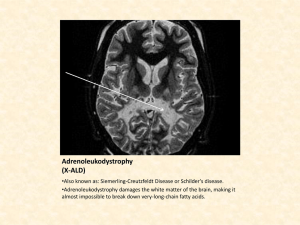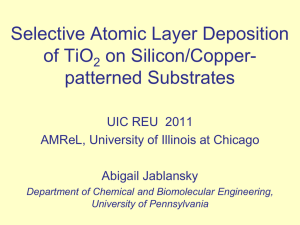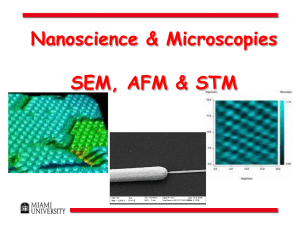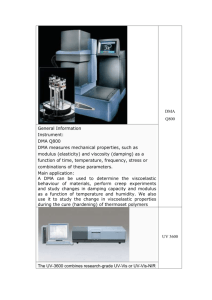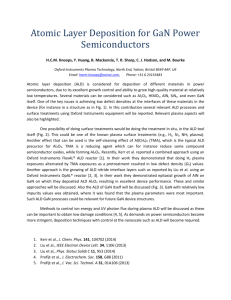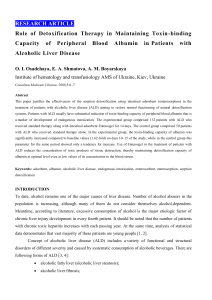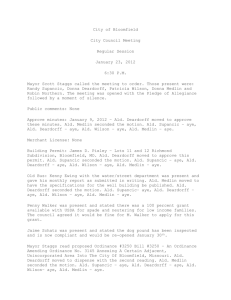Supplementary Information
advertisement
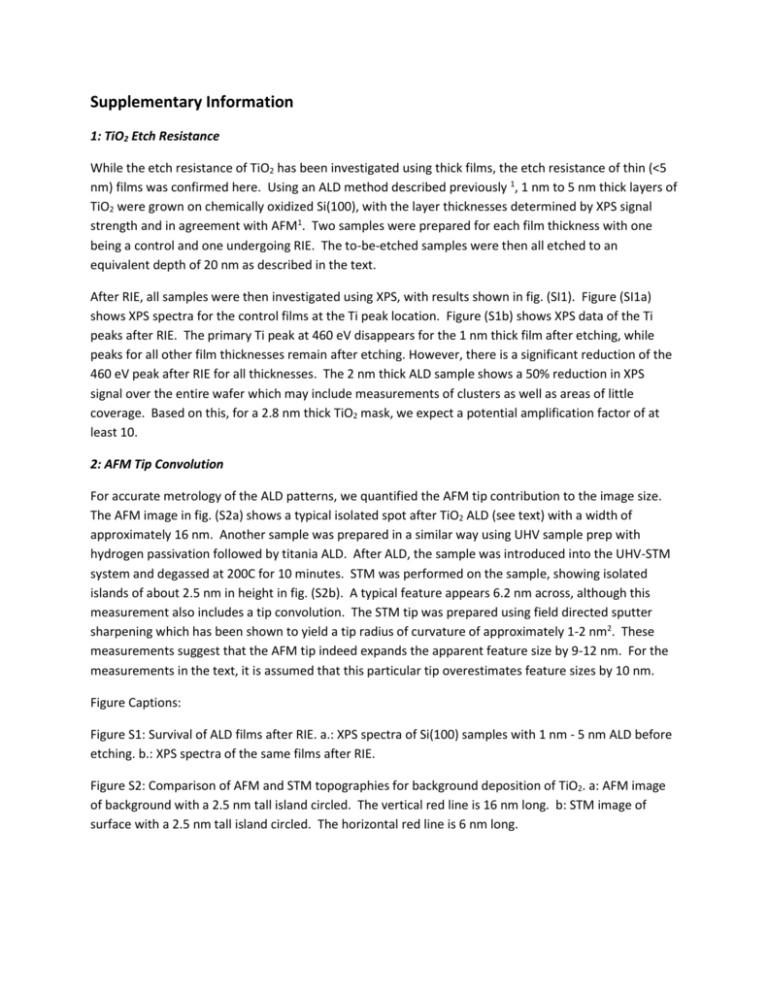
Supplementary Information 1: TiO2 Etch Resistance While the etch resistance of TiO2 has been investigated using thick films, the etch resistance of thin (<5 nm) films was confirmed here. Using an ALD method described previously 1, 1 nm to 5 nm thick layers of TiO2 were grown on chemically oxidized Si(100), with the layer thicknesses determined by XPS signal strength and in agreement with AFM1. Two samples were prepared for each film thickness with one being a control and one undergoing RIE. The to-be-etched samples were then all etched to an equivalent depth of 20 nm as described in the text. After RIE, all samples were then investigated using XPS, with results shown in fig. (SI1). Figure (SI1a) shows XPS spectra for the control films at the Ti peak location. Figure (S1b) shows XPS data of the Ti peaks after RIE. The primary Ti peak at 460 eV disappears for the 1 nm thick film after etching, while peaks for all other film thicknesses remain after etching. However, there is a significant reduction of the 460 eV peak after RIE for all thicknesses. The 2 nm thick ALD sample shows a 50% reduction in XPS signal over the entire wafer which may include measurements of clusters as well as areas of little coverage. Based on this, for a 2.8 nm thick TiO2 mask, we expect a potential amplification factor of at least 10. 2: AFM Tip Convolution For accurate metrology of the ALD patterns, we quantified the AFM tip contribution to the image size. The AFM image in fig. (S2a) shows a typical isolated spot after TiO2 ALD (see text) with a width of approximately 16 nm. Another sample was prepared in a similar way using UHV sample prep with hydrogen passivation followed by titania ALD. After ALD, the sample was introduced into the UHV-STM system and degassed at 200C for 10 minutes. STM was performed on the sample, showing isolated islands of about 2.5 nm in height in fig. (S2b). A typical feature appears 6.2 nm across, although this measurement also includes a tip convolution. The STM tip was prepared using field directed sputter sharpening which has been shown to yield a tip radius of curvature of approximately 1-2 nm2. These measurements suggest that the AFM tip indeed expands the apparent feature size by 9-12 nm. For the measurements in the text, it is assumed that this particular tip overestimates feature sizes by 10 nm. Figure Captions: Figure S1: Survival of ALD films after RIE. a.: XPS spectra of Si(100) samples with 1 nm - 5 nm ALD before etching. b.: XPS spectra of the same films after RIE. Figure S2: Comparison of AFM and STM topographies for background deposition of TiO2. a: AFM image of background with a 2.5 nm tall island circled. The vertical red line is 16 nm long. b: STM image of surface with a 2.5 nm tall island circled. The horizontal red line is 6 nm long. References: 1 S. McDonnell, R.C. Longo, O. Seitz, J.B. Ballard, G. Mordi, D. Dick, J.H.G. Owen, J.N. Randall, J. Kim, Y.J. Chabal, K. Cho, and R.M. Wallace, J. Phys. Chem. C 117, 20250 (2013). 2 S.W. Schmucker, N. Kumar, J.R. Abelson, S.R. Daly, G.S. Girolami, M.R. Bischof, D.L. Jaeger, R.F. Reidy, B.P. Gorman, J. Alexander, J.B. Ballard, J.N. Randall, and J.W. Lyding, Nat. Commun. 3, 935 (2012). SI Figure 1 a b 50#nm# SI Figure 2
